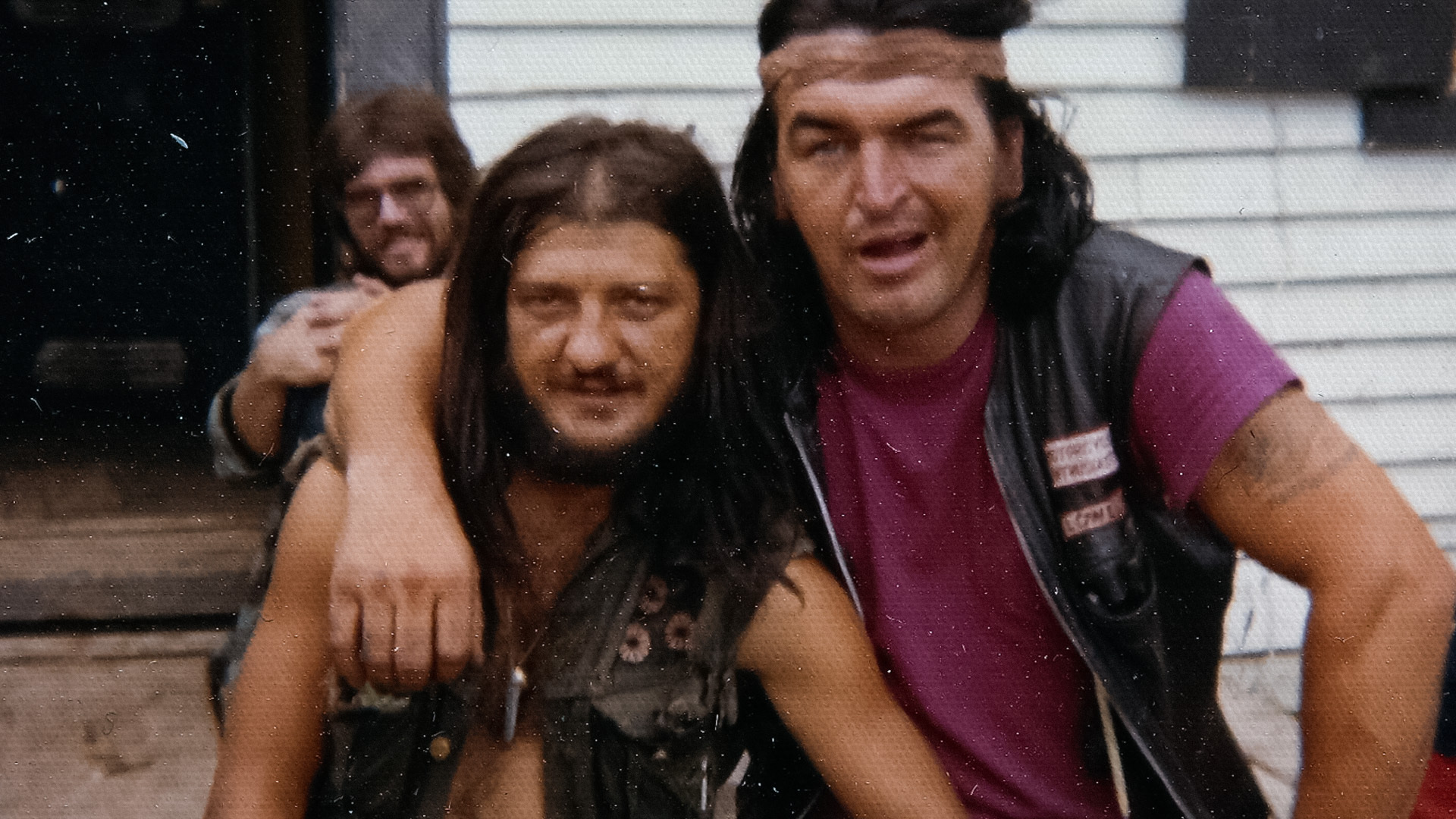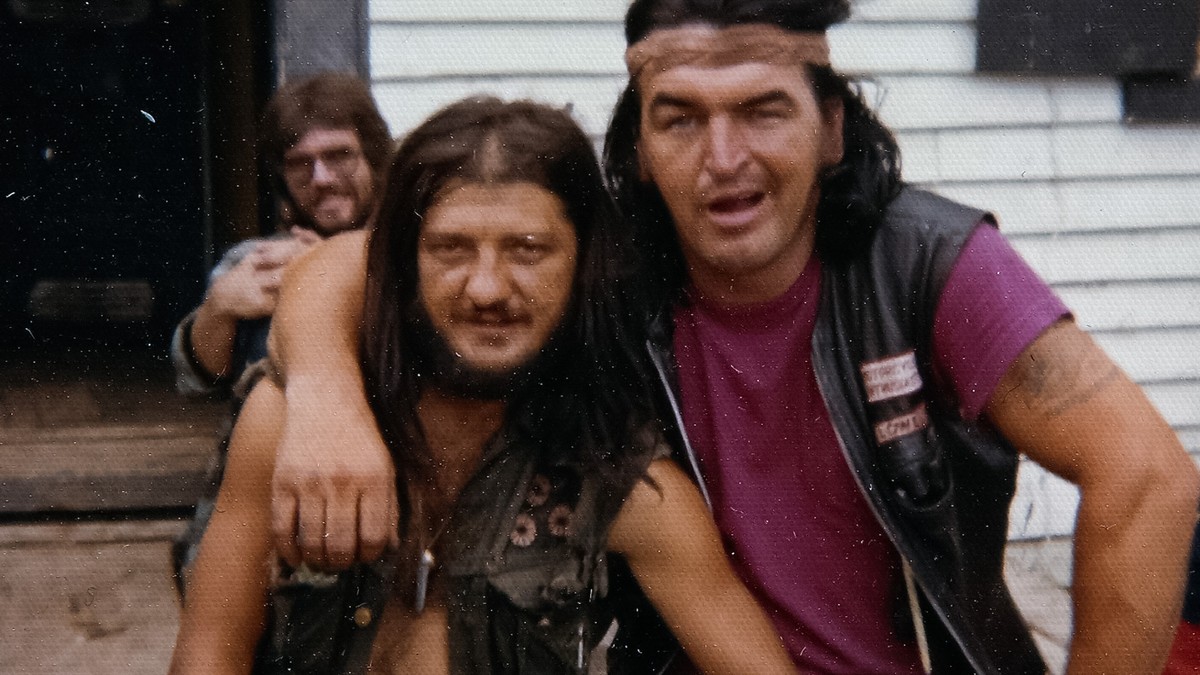
By the 1960s, the Hells Angels were the world’s most notorious outlaw motorcycle club, hellraisers on Harleys who, alongside their violent criminality, cultivated a mystique as countercultural rebels.
But as the 1970s rolled around, the story of the Hells Angels took an even more sinister turn. The biker gang professionalized, in a sense, becoming more disciplined and structured in their approach to the drug trade, and embarked on a deadly path of aggressive expansion. Eventually, the club would evolve into a sophisticated global criminal organization, becoming “the McDonald's of organized crime,” according to Canadian investigative journalist Julian Sher, who has written extensively about the group.
Hells Angels: Kingdom Come, a new VICE documentary series, tells the story of the Hells Angels’s rise to become an international criminal empire and the deadly biker wars unleashed in the process. For the series, VICE spoke to dozens of expert sources about the club, including an active member, and was granted access to film in the Hells Angels’ Quebec South clubhouse.
Watch the first episode below.
“Sonny Barger will openly say, ‘In the 60s, it was all fun and games. In the 1970s, we turned into gangsters,” said Sher, referring to Ralph “Sonny” Barger, a founding member of the Oakland, California chapter who was the face of the club during that era.
“Suddenly, for the Hells Angels—who were always dangerous, always involved in guns and drugs and other activities—it starts turning a lot darker,” he said.
“Drugs means money. Money means turf wars. Turf wars means bombs, killings. And it just sets the stage for what will be four, five decades of violence.”
Ever since its foundation in California in the years following World War II, the Hells Angels had developed a reputation for wreaking havoc. Its members lived defiantly outside the law as so-called “one percenters.” The term refers to a phrase that holds that 99 percent of motorcycle riders are law-abiding citizens, with the outlaw motorcycle clubs proudly identifying themselves as the tiny minority who are not.
But in the 1960s, amid the flourishing drug culture of the era—and the huge potential profits to be gained from a more serious involvement in the trade—the club began to evolve into something altogether new.
“The Hells Angels were really at the right time at the right place,” said Sher.
“They were always into selling drugs, they were into their power, but they weren't a serious organized crime group. Suddenly, they realized that what they were doing as a pastime, selling drugs, could now become their livelihood.”
“Drugs means money. Money means turf wars. Turf wars means bombs, killings. And it just sets the stage for what will be four, five decades of violence.”
Sher and other experts agree that Barger's leadership was largely responsible for the club’s development into a more structured, professionalized criminal organization.
“He realized that, ‘Yes, we could be rowdy bikers, but we need discipline. We need an army,’” said Sher.
“He sets up rules, geographic limits, so each chapter had either a city or often part of a city. You couldn't raid and step on the toes of your fellow brothers.”
“Sonny had big vision, big ambitions,” said Brad Stephen, retired Vancouver police biker specialist.
“He added a level of sophistication to the Hells Angels Motorcycle Club. He brought structure to it.”
Barger oversaw the aggressive expansion of the club in pursuit of controlling the drug trade across the United States, setting up new chapters in new territories, often involving the “patching over” of existing biker crews in those areas.
That brought the Hells Angels into conflict with a rival club, the Outlaws, a powerful and long-established outfit based in the Midwest and Florida that held similar expansionist ambitions.
The rivalry between the clubs would eventually flare into a full-blown biker war that has raged since the 1970s. Experts who have researched the rise of the Hells Angels say the war had its roots in events at a party at the Hells Angels headquarters in New York City on New Year’s Eve 1973, where three Outlaws from Florida showed up.
Accounts of the night vary, but according to some versions, the Outlaws sexually assaulted the partner of the president of the local Hells Angels chapter.
“These three guys got physically attacked and beaten severely by the Hells Angels,” said Scott Burnstein, a reporter for The Gangster Report, a website that covers the criminal underworld,
“After that, the Outlaws were able to identify the names of the three Hells Angels that had attacked their Outlaw brothers in New York on that New Year's Eve, and they took them to a construction site with a gravel pit and killed them all, execution style.
“And that ignited the now still-raging biker war between the Hells Angels and the Outlaws.”
The key battleground in that war would be found north of the U.S. border in Canada, where the two rivals clashed for territory and control of drug trade.
The Outlaws had begun a northern expansion in the mid-to-late 1960s, forging a close alliance with a biker crew called Satan’s Choice in Windsor, Ontario—just across the border from the Outlaws territory in Detroit, Michigan.
“The Outlaws were the exclusive recipients of the Satan's Choice methamphetamine,” said motorcycle club historian Dan Fielding. “In exchange, money, guns come up across the border for the Satan's Choice.”
Burnstein said that due to this exchange, “the Outlaws chapter in Detroit, Michigan, becomes incredibly powerful and important.”
This development demanded a response from the Hells Angels to preserve their place at the top of the biker pecking order.
“The fact that the Outlaws have moved north of the border, have taken over Satan's Choice, suddenly there's a big dilemma [for the Hells Angels] because now all that money, all that drugs north of the border is up for grabs,” said Sher.
“Hells Angels had to stop the Outlaws… one way or the other,” said Fielding.
“They had to have a presence to fight them, to not allow them to seize control from under them.”
Their solution was to form an alliance with a French-Canadian biker crew called the Popeyes, an organization that would eventually “patch over” and officially join the Hells Angels in December 1977.
One of their members, Yves Buteau, would swiftly rise through the ranks to become national president of the Hells Angels—and move to accelerate the war with the Outlaws.
“It just escalated,” said Fielding. “Within two months, three Outlaws were killed.”
“The conflict, the war between the Outlaws and the Hells Angels, naturally follows wherever they go, anywhere in the world.”
Watch new episodes of Hells Angels: Kingdom Come, a new VICE documentary series, on Wednesdays at 10 PM ET. The first episode is on YouTube here.

